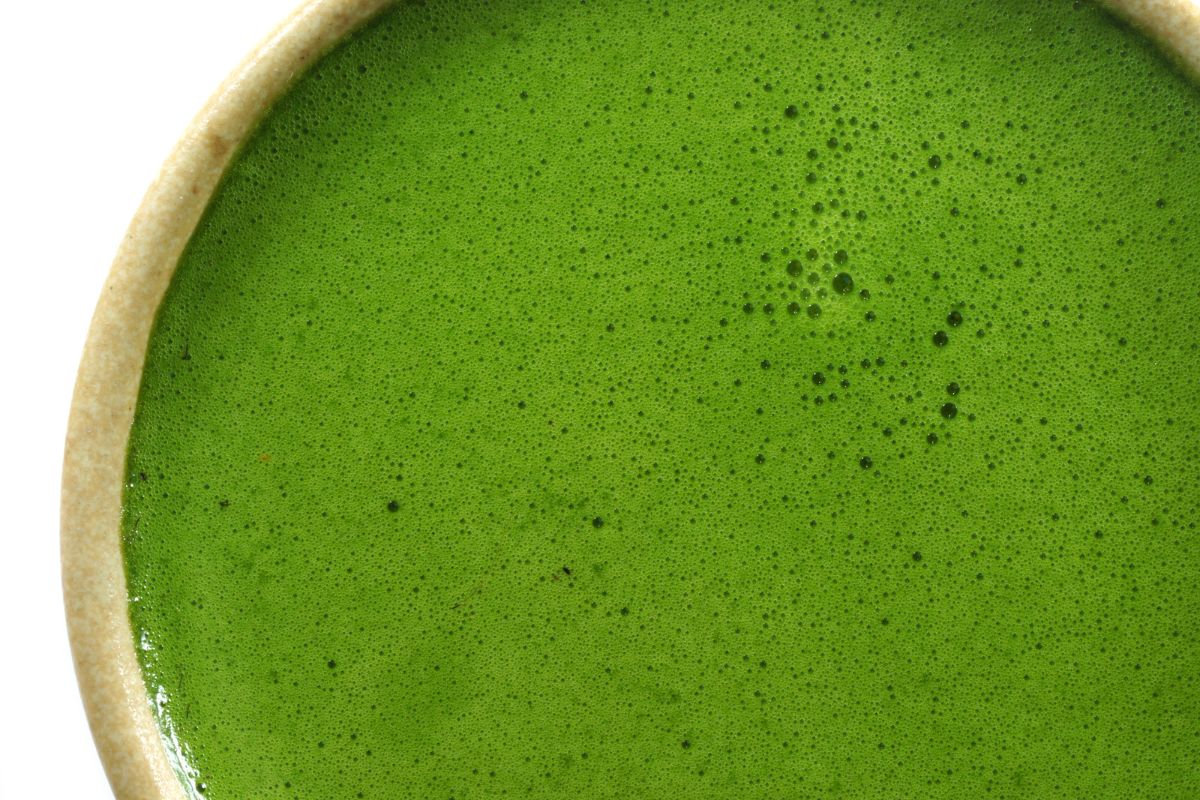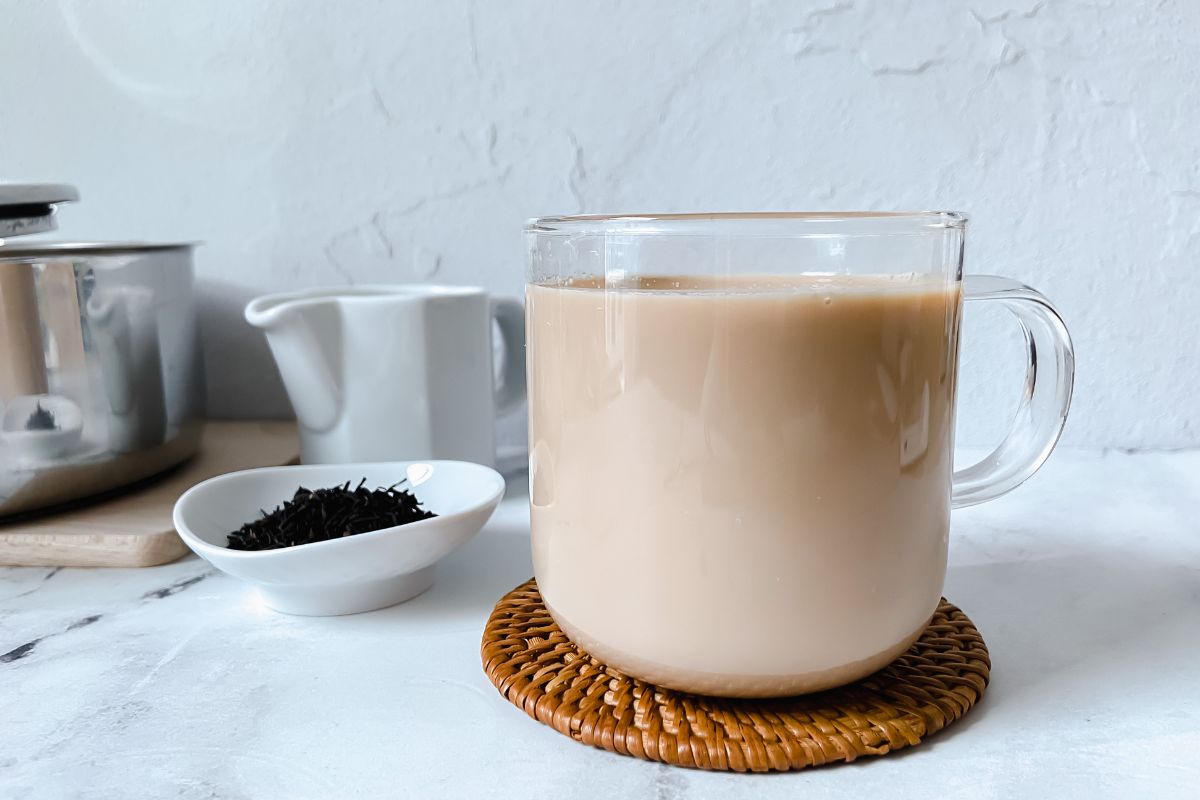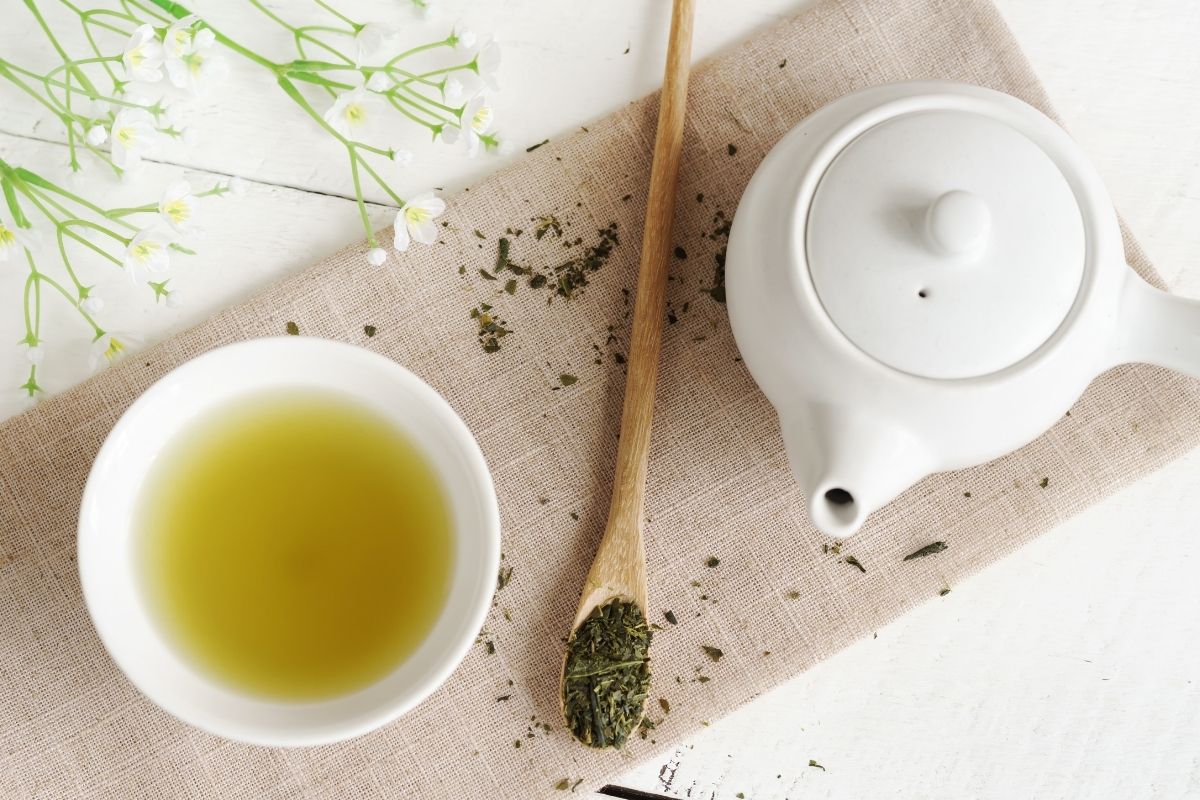Why is my Green Tea Brown (and How to Avoid It)
If you’ve ever prepared green tea, only to find that it has turned yellowish-brown instead of the vibrant green you were expecting, you’re not alone.
In this post, we’ll take a look at why your green tea might be turning brown, when it’s a sign for a problem and what you can do about it.

Is green tea green in color?
It may sound logical that green tea is, well, green.
But actually, it can range in color from light yellow-green to amber and even brown, depending on the quality of the leaves and how they were processed.
Green tea is called ”green” because the color of the processed tea leaves are green, not because of the color of the final tea (just as black tea it’s called “black” because its leaves are dark, while the tea liquor is reddish-brown).
Only green tea types that are grown shaded like gyokuro and matcha tea make a green beverage.
Green teas that are really green

Some tea plants get covered from sunlight to make them milder, with less astringency and more umami.
This process is called shading and it’s used for some types of high grade Japanese green tea.
When tea leaves are shaded they create more chlorophyll, making the leaves greener. The tea liquor (the drink you get after steeping the tea leaves in water) also becomes green.
The most common shaded teas are:
- Kabusecha: this is the name for sencha (Japanese green tea) that gets covered for around 2 weeks.
- Gyokuro: a Japanese green tea that is shaded for 20 or more days
- Tencha: the tea type from which matcha powder is made.
Since covering the plants requires more work, shaded teas are very appreciated and they are more expensive than non-shaded ones.
What makes a green tea green (or less green)?
Green tea comes from the same plant that makes white tea, yellow tea, black tea or oolong tea (the tea plant Camellia sinensis).
Only the processing difference them: when making green tea, the leaves are heated right after recollection.
This stop its oxidation, giving green tea its fresh and vegetal taste.
However, every country, region and even tea master has its own method of processing green tea, making the resulting tea liquor different:
Growing
Some Japanese tea types are grown shaded from the sun for the last few weeks before harvest.
Being exposed to less sunlight makes the leaves contain more chlorophyll.
The result is a brighter green color when brewed.
The best known shaded teas are gyokuro and matcha.
The place a tea plant is grown (its soil and climatic conditions) also affects the resulting tea.
Harvesting
The time of the year when the tea is harvested also affects its color.
The first flush (or new growth) of spring generally results in a brighter green color, while later flushes will produce a more yellow or brownish color.
For example, Gyokuro tea and higher grades of matcha (both green teas that have a deep green color) are always harvested as new spring buds and leaves during the first harvest season.
On the other end, bancha and hojicha, green teas that often have brown color, are harvested during the second flush.
Processing
After being harvested, the green tea leaf is withered and then quickly heated by steaming or by roasting:
- Green tea that is steamed (like most Japanese green tea is) gives a greener tea liquor.
- Green teas that are pan-roasted (such as Chinese green tea) produce an amber cup.
Green teas that are okay to have brown color

As we just saw, if your green tea isn’t really green, it doesn’t necessary mean it’s bad.
In fact, the vast majority of the green teas in the world are on the yellowish side.
There are even some green tea types that are supposed to be brown, like hojicha, sannenbancha and (most of the times) bancha*.
These teas are considered green teas because they follow the processing of green teas, but after that, they get roasted.
While these green tea types are considered lower grades and are therefore cheaper than other green types, they are very enjoyable in their own.
Some people (me among them) even prefer them for their mild taste and lower caffeine content.
*Bancha has in some regions a greenish color, but in other it’s brown because it’s whether sun-dried or roasted.
Reasons your green tea is brown (in an undesirable way)
Now that we know which green teas are supposed to be amber or brown, let’s see what can make a green tea brown in a negative way:
Low quality leaves
If the tea leaf was of low quality to begin with, they may result in darker and more bitter tea.
This is because low quality leaves were exposed to more sunlight, have been exposed to oxygen for longer, or were not processed properly to avoid further oxidation.
Bad tea storage
Green tea should be stored away from light, heat and moisture.
If kept in a humid or hot environment, it will oxidize in an uncontrolled way.
This applies as well as for tea leaves and teabags as for the brewed tea.
Fresh steeped green tea has a lighter color than tea that has being kept for hours, specially if it was in a metallic thermos bottle.
Incorrect brewing
If you use water that is too hot or let the tea steep for too long, it will make the tea leaves release a higher tannin content.
Tannins are compounds that give a slightly astringent and bitter taste to tea, also making it darker in color.
Hard water
Some waters have too high mineral content.
While this doesn’t suppose a problem to drink the water, brewing tea with hard water affects the flavor, color and aroma of the cup.
Using water with too much calcium carbonate may cause your tea to turn browner and it may be even responsible for that greasy film on the surface of your drink.
How to avoid your green tea turning brown
Now that we know all the reasons why your green tea may be brown, let’s see how to avoid it:
- Choose a tea type that has green color:
If you want a vibrant green colored tea, go for shaded green tea types like gyokuro, matcha, matcha-iri blends or kabusecha. - Use good quality leaves:
Buy your tea from a trusted sources and make sure to check the expiration date. - Choose loose green tea over tea bags:
Loose leaf tea not only typically use higher quality tea, but because the leaves are bigger, they will oxidize less.
If using a teabag, try to use a brand that bring them packed individually to avoid contact with air. - Store your tea properly:
In a dark, cool and dry place, away from any other food or beverage (that may emit moisture or odors). - Brew with fresh cold water:
If your tap water is hard, use bottled or filtered water. - Make sure you don’t steep it at too high temperatures or for too long:
The ideal steeping temperature for green tea is between 60-80 °C (140-176 °F).
Depending of the green tea type, you may steep it for 30’ to up to 2 minutes.
Cold brewing or brewing with ice is always a good option to avoid over-steeping.
Check this article to see how easy it is to cold brew green tea. - Avoid metallic thermic bottles:
If you are keeping your brewed green tea for later, use a glass teapot or cup with a lid instead of a metallic recipient.
You may also add a couple of lemon juice drops as antioxidant.
Other questions about green tea turning brown
If your matcha has a yellowish or brownish tone, it may mean that the leaves weren’t shaded properly. Culinary grade matcha is made from older leaves and because of that, it also has a less vibrant color than ceremonial matcha (which is higher grade).
Also, as matcha is finely powdered, it may oxidize if not used quickly enough or if stored improperly.
As matcha powder gets old, it may lose its green and get a brownish green hue.
Unfortunately, once the tea has oxidized there’s no way to revert the process. But you can avoid it happening in the first place by following the tips from this article:
1. Remember that green tea is very delicate so it needs very short steep time at lower temperatures. In case of doubt, follow vendors instructions or cold steep it.
2. If your green tea leaves get old, you can make hojicha out of them by roasting them: they won’t be green anymore but they will still be delicious.
In most cases it’s okay to drink green tea that has turned brown, unless it has grown mold or it smells rancid (then you’ll have to discharge it).
But even if still safe, when a tea that was supposed to have a lighter color gets darker, it may not taste so good, because it may be over-oxidized, old or over-steeped.
The question is: do you still want to drink it?
In my opinion life is too short for drinking bad tea.
Thanks for reading! I hope this post has helped you understand why your green tea may go brown and how to avoid it in the future (if that’s what you want).







In your blog I can always get so good information about the healthy beverages I like.
Thank you for showing how to prepare beautiful green tea!
I am so happy to read your words. Thank you for your compliment!